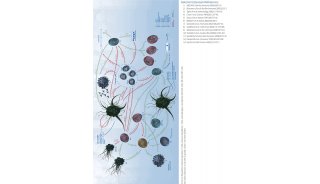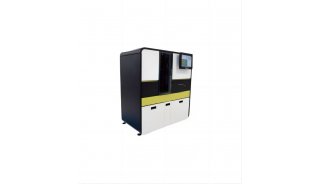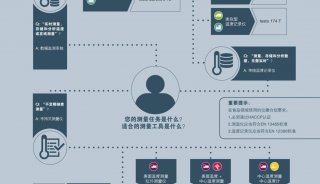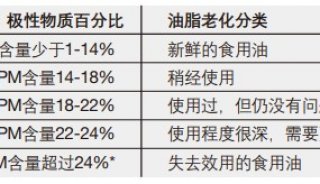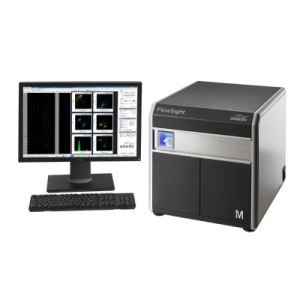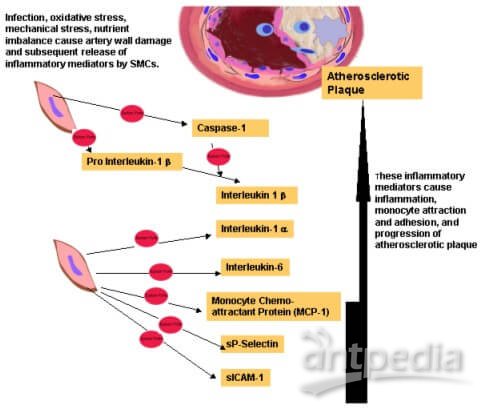免疫细胞表面抗原分子CD家族对照表(CD1-CD247)-3
CD7
Membrane glycoprotein and Fc receptor for IgM
Homologous to TCR gamma, Ig kappa
Membrane expression early during T ontogeny, before TCR rearrangement, persists until terminal stages of T cell development
Lower expression in memory T cells vs. naive T cells
Positive staining (normal): mature peripheral T cells (85%), post-thymic T cells (majority), NK cells (majority), some myeloid cells
Positive staining (disease): T cell ALL; AML (especially M4/M5), chronic myelogenous leukemia, blasts in transient myeloproliferative disorder
Negative expression: B cell ALL, Sezary syndrome, adult T cell leukemia/lymphoma
Micro images: extranodal NK/T cell lymphoma, nasal type
CD8
Aka OKT8, T cell suppressor/cytotoxic cells
On chromosome #2
MHC class I restricted receptor; binds to nonpolymorphic region of class I molecules; may increase avidity of cell-cell interactions
Associated with lymphoepithelioma-like carcinoma of lung (AJSP 2002;26:715)
Positive staining (normal): T cells (25-35% of mature peripheral T cells, most cytotoxic T cells, CD4/CD8+ thymocytes); NK cells (30%-which are also CD3 negative); cortical thymocytes (70-80%), epidermotrophic lymphocytes in mycosis fungoides (AJSP 2002;26:450)
Micro images: lymphoepithelioma-like carcinoma of cervix-figure 3, acute demyelinating disease
Micro images (Mod Path subscribers): nodal cytotoxic T cell lymphoma
Reference: Mod Path 2002;15:1131
CD9
May mediate platelet activation and aggregation
Antibodies are used to purge bone marrow prior to peripheral stem cell bone marrow transplant
Viral co-receptor
Positive staining (normal): pre B cells, B cell subset, T cells, macrophages, platelets, eosinophils, basophils, megakaryocytes, endothelial cells, brain, peripheral nerve, vascular smooth muscle, cardiac muscle, epithelia
CD10
Aka Common Acute Lymphoblastic Leukemia Antigen (CALLA), neutral endopeptidase 24.11, neprilysin, enkephalinase
Cell membrane metallopeptidase, characteristic marker of follicular center cells and follicular lymphoma, but also widely distributed in normal tissue and neoplasms; also localized to brush border in small bowel mucosa
Inactivates bioactive peptides
Uses:
Acute lymphoblastic leukemia: one of first markers to identify leukemic cells in children (hence its name)
Breast: marker of myoepithelial cells, Mod Path 2002;15:397
Burkitt lymphoma: confirm diagnosis
Colonic carcinogenesis: increase in stromal cells from mild to severe dysplasia to invasive carcinoma, Hum Path 2002;33:806-811
Endometriosis: helpful in identifying areas of endometriosis if sparse glandular tissue
Follicular lymphoma: to confirm diagnosis
Hepatocellular carcinoma vs. nonhepatocellular carcinomas: 68% sensitive and >95% specific with canalicular pattern, AJSP 2001;25:1297, AJSP 2002;26:978, although another study recommends Hepatocyte, MOC31, and pCEA but not CD10, Mod Path 2002;15:1279
Microvillous inclusion disease: strong CD10+ cylasmic staining vs. linear brush border staining in normals, AJSP 2002;26:902
Positive staining (normal): adrenal cortex, pre-B cells, brain, choroid plexus, cortical thymocytes, endometrial stroma, follicular center cells, granulocytes, kidney microvilli, liver, lymphohemaoietic precursors, male GU epithelium, mesonephric remnants, myoepithelial cells (breast), neutrophils, ovary, placenta (cytotrophoblast, intermediate trophoblast, syncytiotrophoblast), small intestine (linear brush border staining)
Positive staining (disease): adenomyosis of endometrium, preB ALL (75%), CML in blast crisis (90%), colonic carcinoma, dermatofibroma, dermatofibrosarcoma, endometrial adenocarcinoma (may be present in desmoplastic stroma), endometrial stromal tumors, follicular center cell lymphomas, gastric carcinoma, glioma, hepatocellular carcinoma (canalicular pattern similar to polyclonal CEA), malignant mixed mullerian tumors, mediastinal germ cell tumors, melanomas, mesonephric tumors, microvillous inclusion disease (strong cylasmic staining), mullerian adenosarcoma, pancreatic adenocarcinoma, pancreatic solid-pseudopapillary tumor, placental site trophoblastic tumor, primary mediastinal B cell lymphomas (some), prostate carcinoma, renal cell carcinoma, renal cell sarcoma, rhabdomyosarcoma and other sarcomas, schwannoma, tumor of wolffian origin of broad ligament and ovary, urothelial carcinoma, uterine carcinoma, uterine cellular leiomyomas (50%), uterine leiomyosarcomas and other uterine sarcomas
Negative staining: myeloid and erythroid precursors, other female genital tract tumors (including clear cell carcinomas)
Micro images: follicular center cells (figure 1), intranodal heteroic mammary ducts (figure 1C),
Micro images (AJSP subscribers): endometrial stromal tumor #1 (negative), #2, hepatocellular carcinoma#1, #2, mesonephric carcinoma of uterus, mesonephric derivatives in men, microvillous inclusion disease#1, #2 (controls), vulvar, vaginal and cervical lesions, uterus and trophoblast, fallopian tube and ovary
Micro images (Hum Path subscribers): canalicular pattern in hepatocellular carcinoma (figure C), gastric carcinoma at apical border (figure B), colonic adenoma, colonic carcinoma#1, #2
Micro images (Mod Path subscribers): canalicular pattern in hepatocellular carcinoma (figure B), malignant mixed mullerian tumor#1, #2, #3, breast myoepithelium, breast adenosis, breast DCIS, invasive ductal carcinoma of breast, diffuse large B cell lymphoma, adenomyosis
References: AJSP 2002;26:978, AJSP 2001;25:1540, AJSP 2002;26:902, AJSP 2003;27:178, Mod Path 2002;15:1279, Mod Path 2002;15:923, Mod Path 2002;15:397, Mod Path 2002;15:413, Mod Path 2002;16:22
CD11
CD11a, b and c all have same beta chain (CD18)
Members of integrin receptor family; heterodimers of noncovalently associated alpha and beta subunits
CD11a
Aka alpha L; LFA-1 (in complex with CD18)
An alpha integrin chain that binds to CD18 and mediates leukocyte adhesion and lymphocyte recirculation through lymph nodes
With CD18, binds to ICAM-1 (CD54, leukocyte adhesion molecule) and ICAM-2 (CD102)
Facilitates lymphocyte blastogenesis, cellular cytotoxicity, lymphocyte-endothelial cell adhesion, and binding to unopsonized bacteria (E. coli) and fungi (Hislasma capsulatum)
Note: patients with leukocyte adhesion deficiency (mutations in CD18) have often fatal immunodeficiency early in life
Marker of differentiation in acute promyelocytic leukemia
Positive staining (normal): all leukocytes
Negative staining: platelets
CD11b
Aka CR3, iC3b receptor
Mediates phagocytosis of particles opsonized with iC3b
Facilitates neutrophil aggregation, adhesion to substrates by opsonization, chemotaxis
Ligands include fibrinogen, Factor X, ICAM-1, Saccharomyces cerevisiae, Staphylococcus epidermidis, Hislasma capsulatum,
Note: C3 is common to classical and alternate complement pathway, and serves as an amplification step
C3b (activated C3) can amplify by cleaving more C3 via the alternate complement pathway
Positive staining (normal): follicular dendritic cells, granulocytes, macrophages, myeloid cells beginning with promyelocytes, NK cells, some B/T cells
Positive staining (disease): AML-M1-M3 (35-70%), M4-M5 (80-90%); hairy cell leukemia (virtually all)
CD11c
Aka CR4, iC3b receptor
Clears opsonized particles and immune complexes; also binds to fibrinogen and is involved in adhesion of monocytes and neutrophils to endothelium
Member of beta 2 family of integrin receptors
Prognostic value: associated with good prognosis in B-CLL
Positive staining (normal): 50% of activated CD4/CD8+ T cells; granulocytes, lymphocytes, macrophages, NK cells
Positive staining (disease): AML-M4-M5 (50%); hairy cell leukemia (virtually all), B-CLL
CD12
Positive staining (normal): granulocytes, monocytes, NK cells, platelets
Negative staining: basophils, bone marrow precursors, AML
CD13
Aka AminoPeptidase N, APN
Myeloid antigen, although CD33 is more specific
Peptide cleaving enzyme of brush border membranes of small intestine, renal proximal tubules and placenta
Also present on CNS synaptic membranes
Receptor for one strain of human coronavirus that causes many upper respiratory tract infections
Defects appear to cause various leukemias/lymphomas
Serves an important function for early CMV infection
CD13 autoantibodies are strongly associated with chronic graft versus host disease after bone marrow transplantation
Positive staining (normal): bile duct canaliculi, central nervous system synapses, endothelial cells, fibroblasts, granulocytes (most), large granular lymphocytes (some), macrophages, osteoclasts, perineurium of peripheral nerves, placenta, renal proximal tubules, small intestine
Positive staining (disease): AML M1-M5 (75-95%), M6 (usually), CML (90%); pre B ALL (7-10%), pre T ALL (rare)
CD14
Aka lipopolysaccharide (LPS) receptor, endotoxin receptor
Binding of LPS to CD14 on macrophages causes their activation and release of cytokines
Involved in the clearance of apoptotic cells
Also regulates IgE levels
Positive staining (normal): macrophages/monocytes (90%), granulocytes-weak (30%), Langerhans cells; dendritic cells, B cells
Positive staining (disease): B-CLL (90%), follicular center cell lymphoma (80%), diffuse large B cell lymphoma (40%); AML-M4/M5 (50-90%)
Negative staining: myeloid progenitors, AML M3, M6, M7, M0-M2 (usually)
CD15
Aka LeuM1, Lacto-N-Fucopentose III ceramide
Recognizes Hapten X, a carbohydrate linked to cell membrane proteins of myelomonocytic cells
Positive staining (normal): myeloid cells (90%); activated B and T cells (including infectious mononucleosis); eosinophils stain intensely
Positive staining (disease): Reed-Sternberg cells, 20% of T cell lymphomas, 5% of B cell lymphomas, 50% of carcinomas
Negative staining: erythroid cells, platelets; ALL
Micro images: Reed-Sternberg cells-figure 3A, primary pulmonary Hodgkin’s lymphoma-figure 3A
CD15s
Aka Sialyl Lewis X; ligand for CD62P and CD62E
Positive staining (normal): granulocytes, macrophages
CD15u
Aka sulfated CD15






